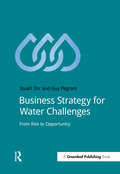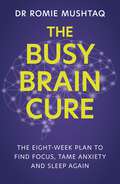- Table View
- List View
The Business of Bioscience: What goes into making a Biotechnology Product
by Craig D. ShimasakiMy journey into this fascinating field of biotechnology started about 26 years ago at a small biotechnology company in South San Francisco called Genentech. I was very fortunate to work for the company that begat the biotech industry during its formative years. This experience established a solid foundation from which I could grow in both the science and business of biotechnology. After my fourth year of working on Oyster Point Boulevard, a close friend and colleague left Genentech to join a start-up biotechnology company. Later, he approached me to leave and join him in of all places – Oklahoma. He persisted for at least a year before I seriously considered his proposal. After listening to their plans, the opportunity suddenly became more and more intriguing. Finally, I took the plunge and joined this ent- preneurial team in cofounding and growing a start-up biotechnology company. Making that fateful decision to leave the security of a larger company was extremely difficult, but it turned out to be the beginning of an entrepreneurial career that forever changed how I viewed the biotechnology industry. Since that time, I have been fortunate to have cofounded two other biotechnology com- nies and even participated in taking one of them public. During my career in these start-ups, I held a variety of positions, from directing the science, operations, regulatory, and marketing components, to subsequently becoming CEO.
The Business of Densification: Governing Land for Social Sustainability in Housing
by Gabriela DebrunnerAffordable housing shortage and social exclusion have become severe societal problems across the globe. Increasing numbers of people are suffering from social eviction and displacement due to urban densification, modernization, rising rents, and intense housing commodification. Vulnerable resident groups – such as old-aged or households with children – who often live in old housing stocks planned to be densified, renovated, or upgraded with higher rents, are forced to leave the urban core centers because they can no longer afford to live in central locations, or because they experience unstable or insecure housing conditions. A scenario that is highly unsustainable.So far, studies on densification have mainly considered the process as technological, architectural, or design-based problem (e.g., Kyttä et al., 2013; Broitman & Koomen, 2015; Bibby et al., 2018). However, systematic knowledge on how to implement densification objectives sustainably – regarding economic, environmental, and social aspects – is still lacking. This book tackles this gap by analyzing densification from a governance perspective. Its point of departure is that densification per se does not necessarily lead to sustainable outcomes in terms of social inclusion, cohesion, or community stability. Rather, it politicizes densification by neglecting how the process is planned, implemented, and governed by the actors involved.The book applies an actors-centered neoinstitutionalist political ecology approach to reveal the specific objectives and strategies of actors involved, as well as the socio-political structures (i.e. rules. laws, and policies) that govern densification. Four Swiss in-depth empirical qualitative case studies (Zürich, Basel, Köniz, and Kloten) illustrate the political and legal conditions for success or failure for (un)sustainable implementations of densification. Ultimately, this book advises stakeholders, governments, urban practitioners, and academics on more effective, community-oriented, collective, and decommodified forms of governance to respond to the needs of the public at large rather than simply catering to private individuals and firms. Such governance initiatives entail active municipal land policy approaches outside a purely market-based investment logic that not only limit, but also work with property rights.This is an open access book.
The Business of Electronics: A Concise History
by A. Kumar SethiElectronics is an ever-changing field with an entrepreneurial spirit and a rich history, populated by some of the world's most famous companies and personalities. The Business of Electronics details the field's complex ecosystem in all its trials and tribulations. It looks at companies such as Apple, IBM, Samsung, and Nokia, as well as now-extinct companies such as Honeywell Bull (France) and Sinclair Computers (UK) that contributed to technology and business. Sethi shows us how a handful of US companies led the charge in designing equipment that could make millions of small, reliable components; how Nokia started in the timber business; the history of inventors like J.C. Bose, a pioneer in radio communication (who inadvertently made Guglielmo Marconi famous); and why there are numerous companies and creators that never made it or that we have never heard of. This all-encompassing book not only explores the vibrant history of electronics, it uses case studies to examine the companies and people that made history and explain how we ended up where we are today.
The Business of Neuropsychology (AACN Workshop Series)
by Mark BarisaThe purpose of this text is to provide an overview of basic business principles and how they can be used to enhance the stability and fiscal responsibility of neuropsychological practice. The principles discussed are are defined and information is provided to guide practical application of the concepts. The book is designed to benefit professionals at varying levels of practice regardless of their work setting, but focuses primarily on the issues related to neuropsychological practice. Graduate school catalogs and training program brochures reveal a broad array of educational opportunities designed to prepare future professionals for independent practice in neuropsychology. However, little is offered to prepare neuropsychologists for the business realities that await them in the workplace. The expectation that they will simply see patients and do quality clinical work is often in conflict with institutional goals of making money so that the doors can remain open. The result can be a cataclysmic "crash" when altruistic ideals meet capitalistic needs. The concepts of "cash is king" and "no margin, no mission" are foreign to most neuropsychologists until our own fiscal bottom line is affected. The Business of Neuropsychology also contains an overview of business "basics," such as budget and fiscal tracking, strategies for communicating with stakeholders in the business, front and back office flow and processes, billing, coding, marketing, referral relationship development, and staff growth and development. The Business of Neuropsychology is part of the Oxford AACN Workshop series.
The Business of Neuropsychology (AACN Workshop Series)
by Mark BarisaThe purpose of this text is to provide an overview of basic business principles and how they can be used to enhance the stability and fiscal responsibility of neuropsychological practice. The principles discussed are are defined and information is provided to guide practical application of the concepts. The book is designed to benefit professionals at varying levels of practice regardless of their work setting, but focuses primarily on the issues related to neuropsychological practice. Graduate school catalogs and training program brochures reveal a broad array of educational opportunities designed to prepare future professionals for independent practice in neuropsychology. However, little is offered to prepare neuropsychologists for the business realities that await them in the workplace. The expectation that they will simply see patients and do quality clinical work is often in conflict with institutional goals of making money so that the doors can remain open. The result can be a cataclysmic "crash" when altruistic ideals meet capitalistic needs. The concepts of "cash is king" and "no margin, no mission" are foreign to most neuropsychologists until our own fiscal bottom line is affected. The Business of Neuropsychology also contains an overview of business "basics," such as budget and fiscal tracking, strategies for communicating with stakeholders in the business, front and back office flow and processes, billing, coding, marketing, referral relationship development, and staff growth and development. The Business of Neuropsychology is part of the Oxford AACN Workshop series.
The Business of Plant Breeding: Market led Approaches to Plant Variety Design in Africa
by Rowland Chirwa Agyemang Danquah Erik Yirenky Danquah Appolinaire Djikeng Shimelis Hussein Paul M. Kimani Heather Merk Ivan Rwomushana Jean Claude Rubyogo Jonathan Shoham Pangirayi Tongoona Nasser YaoThe Business of Plant Breeding is the result of a study on demand-led plant variety design for markets in Africa, sharing best practices from private and public sector breeding programmes worldwide that are applicable to improving tropical crops in Africa. Beginning with an overview of the principles of demand-led plant breeding, the book then discusses aspects such as understanding the demands of clients and markets in rural and urban areas, foresight in setting product profiles and breeding targets, and determining breeding strategy and stage plans. It also covers measuring success and making the business case for future investments in breeding programmes that will deliver new varieties to meet market demands. The book: - Brings together the experience of plant breeders around the world, representing universities, national plant breeding programmes, regional and international agricultural research institutes, and private seed companies, showcasing how to respond to changing market demands; - Provides educational resource materials within each chapter; - Includes templates for use as planning tools by plant breeding programs for determining priority traits that meet market demands. An important read for professionals and students of plant breeding and genetics, this book is also a useful resource for anyone interested in developing and disseminating new, market-led technologies to increase productivity and profitability in tropical agriculture. The study was sponsored by the Australian Centre for International Agricultural Research, the Crawford Fund and the Syngenta Foundation for Sustainable Agriculture, and managed by the University of Queensland.
The Business of Shipping
by Lane C. KendallT HIS VOL U M E has been written to describe the business side of a commercial enterprise whose field is the entire civilized world. Historically, the theory and knowledge of shipping management, as distinguished from the practical skills of seaman ship, have been transmitted from one generation to the next by word of mouth. Little has been put on paper, primarily because the finest exponents of the art of steamship management have been too busy with their day-to-day concerns to do so. The "working level" personnel often are superbly competent, but rarely qualify as liter ary craftsmen. It has been my aim, in preparing this analysis of the principles of the "business" of commercial shipping, to describe that which trans pires in the various divisions of a shipowning and operating organi zation. Insofar as possible, the procedures followed in the offices have been described and explained, as well as the underlying prin ciples of management by which their decisions are reached. In the process of learning the principles and practices that are set forth in these pages, I have spent ajoy-filled lifetime in associa tion with ships. It has been my good fortune to work in large and small American steamship offices, to operate a major cargo termi nal, to participate in establishing and putting into effect the policies of a world-girdling American steamship organization, and to teach young men these principles learned from experience as well as from precept.
The Business of Social and Environmental Innovation: New Frontiers in Africa
by Verena Bitzer Ralph Hamann Martin Hall Eliada Wosu Griffin-ELIn the face of limited progress toward meeting Millennium Development Goals or addressing climate change and resource degradation, increasing attention turns to harnessing the entrepreneurial, innovative, managerial and financial capacities of business for improved social and environmental outcomes. A more proactive role for business in sustainable development is especially pertinent in sub-Saharan Africa, which has been plagued by conflict and poverty but shows signs of a brighter future as the world’s second-fastest-growing region.The book considers how the socio-economic context influences the objectives of social innovation and even our definition of what we mean by social innovation. Secondly, the book aims to show how social innovation initiatives emerge and fare in context of the limited ability of many African countries to provide public goods and services.
The Business of Space: The Next Frontier of International Competition
by L. Brennan A. VecchiThis book looks at the space industry from a business perspective, with a focus on international competition. The space industry traces its origins to the middle of last century as a government/military domain and the author now looks at the ongoing evolution of space exploration and travel, and projects the future of the industry.
The Business Plan Reference Manual for IT Businesses
by Fernando Almeida José SantosThere is a great worldwide desire to launch new technology-based business. In this sense, and increasingly, entrepreneurship courses have arisen in several universities and many of the courses in the management, administration and engineering areas already offer entrepreneurship curricular units. Throughout those programs, the teams develop key integrated competencies in innovation, entrepreneurship and technology that will ultimately enable the students to create and develop new technology-based businesses. The Business Plan Reference Manual for IT Businesses provides a reference manual for undergraduate and graduate students that intend to launch their start-up business in the IT field. It helps them to create and model the business plan of their business. Therefore, this manual is mainly aimed at instructors who want to offer a practical view of the process of modeling, designing and developing an IT start-up. Additionally, it can be individually used by entrepreneurs who wish to launch their start-up businesses in IT field. The structure of the book was defined taking into account different approaches to the construction of the business plan, which basically consider a disaggregation of some of these chapters in others smaller (e.g., marketing plan into products/services and market, financial plan into investment plan and economic-financial projections). We chose to aggregate these dimensions into a single chapter, which in our view facilitates the process of analyzing a business plan. It is also relevant to mention the inclusion of “Chapter V – Prototype description” which is innovative and intends to take into account the application of this business plan template to the information technology sector.
The Business Plan Reference Manual for IT Businesses
by Fernando Almeida José SantosThere is a great worldwide desire to launch new technology-based business. In this sense, and increasingly, entrepreneurship courses have arisen in several universities and many of the courses in the management, administration and engineering areas already offer entrepreneurship curricular units. Throughout those programs, the teams develop key integrated competencies in innovation, entrepreneurship and technology that will ultimately enable the students to create and develop new technology-based businesses. The Business Plan Reference Manual for IT Businesses provides a reference manual for undergraduate and graduate students that intend to launch their start-up business in the IT field. It helps them to create and model the business plan of their business. Therefore, this manual is mainly aimed at instructors who want to offer a practical view of the process of modeling, designing and developing an IT start-up. Additionally, it can be individually used by entrepreneurs who wish to launch their start-up businesses in IT field. The structure of the book was defined taking into account different approaches to the construction of the business plan, which basically consider a disaggregation of some of these chapters in others smaller (e.g., marketing plan into products/services and market, financial plan into investment plan and economic-financial projections). We chose to aggregate these dimensions into a single chapter, which in our view facilitates the process of analyzing a business plan. It is also relevant to mention the inclusion of “Chapter V – Prototype description” which is innovative and intends to take into account the application of this business plan template to the information technology sector.
Business Research Projects
by A. D. Jankowiczabout management research, has developed and made a more prominent appearance in the relevant literature. Both the Academy of Management Review and Management Education and Development have devoted complete special issues to these topics in their impact on theory-building and research: see section 6.5. While the latter journal continues, its editorial team have decamped to set up a new periodical, Management Learning, which emphasizes current thinking about management research. This -the 'New Paradigm', postmodern analysis, call it what you will-is an epistemology whose relevance I argued in my first edition and continue to emphasize in Chapter 6 of the present. The appreciation of qualitative approaches to the understanding of organizational life has increased during the last four years, approaches seen as complementary to quantitative analysis by many, a substitute by some. The appearance of the second edition of Miles and Huberman (1994) indicates the growing importance attached to qualitative analysis by many management researchers, and I have mentioned some of the techniques they advocate at relevant points in Part Three of this book, without attempting, or indeed being able, to replicate their magnificent work. Discourse analysis, biography and hermeneutic analysis are among the recent approaches to which pointers are provided in Part Three. Similarly, the value of arguing a case, rather than testing a thesis, has been emphasized for some forms of Diploma and MBA work: see section 6.4.
Business Research Projects for Students
by A. D. JankowiczThe idea for this book came about one Friday afternoon towards the end of a summer term. I was giving the third project tutorial of the afternoon. The first had been to a BA (Business Studies) student, the second to a part-time MBA student, and the third to a student registered on the Diploma in Personnel Management programme, and a great variety of issues had been dealt with during the course of the time involved. Nevertheless, I noticed that some of the material was common to all three students. I found myself thinking that I was repeating myself, and wanting to get through the basics as quickly as possible so that we could move on to the specifics of each particular project, which we both, each student and I, found more interesting to deal with. Unfortunately, the basics were precisely those topics which I considered essential to the success of any project. What's more, they dealt with the sort of material which wouldn't, on the whole, have occurred spontaneously to many students, and so it was a necessary part of my job to go through them. One or two could be dealt with by issuing a handout, and the student could be referred to the library for some of the rest, but there wasn't a systematic written compilation of all the points that I needed to make.
Business Strategy for Water Challenges: From Risk to Opportunity
by Stuart Orr Guy PegramWater is a resource under increased stress, with its management now cited as one of the greatest risks to business continuity and growth. This concise guide for professionals offers strategic steps for developing a corporate water stewardship strategy. It will enable you to: define business water risks, and the opportunities associated with those risks; explore, through sector-specific profiles, risks associated with regulation, reputation, external response and engagement, and physical incidents; develop a clear plan and process for creating, managing and mainstreaming a corporate water strategy; identify several initiatives and new risk tools that your company can use to stay on top of best practice in water management. With the advent of risk tools, and a growing list of testaments around business risk from water, we are now able to respond more appropriately to how this resource is impacted by and impacts upon business. Use this book as your guide as you begin to build your company's strategy around water.
Business Strategy for Water Challenges: From Risk to Opportunity (Doshorts Ser.)
by Stuart Orr Guy PegramWater is a resource under increased stress, with its management now cited as one of the greatest risks to business continuity and growth. This concise guide for professionals offers strategic steps for developing a corporate water stewardship strategy. It will enable you to: define business water risks, and the opportunities associated with those risks; explore, through sector-specific profiles, risks associated with regulation, reputation, external response and engagement, and physical incidents; develop a clear plan and process for creating, managing and mainstreaming a corporate water strategy; identify several initiatives and new risk tools that your company can use to stay on top of best practice in water management. With the advent of risk tools, and a growing list of testaments around business risk from water, we are now able to respond more appropriately to how this resource is impacted by and impacts upon business. Use this book as your guide as you begin to build your company's strategy around water.
Busy Ant Maths European edition — PUPIL BOOK 3C: (PDF)
by Peter ClarkeThe Busy Ant Maths Pupil Book 3C contains three levels of differentiated challenge built-in to each lesson as well as extra consolidation and extension activities to ensure rapid progression for every child.
Busy Ant Maths European edition — PUPIL BOOK 5B: (PDF) (Busy Ant Maths European Edition Ser.)
by Peter ClarkeThe Busy Ant Maths Pupil Book 5B contains three levels of differentiated challenge built-in to each lesson as well as extra consolidation and extension activities to ensure rapid progression for every child. The Busy Ant Maths Pupil Book 5B contains three levels of differentiated challenge built-in to each lesson as well as extra consolidation and extension activities to ensure rapid progression for every child.
Busy Ant Maths: Homework Guide 3 (Busy Ant Maths)
by Jeanette Mumford Sandra Roberts and Elizabeth Jurgensen Illustrated by Steve Evans Eva Sassin Gwyneth Williamson and Louise Forshaw Series edited by Peter ClarkeThe Busy Ant Maths programme ensures conceptual understanding and mathematical fluency from the start inside and outside the classroom. Homework is linked to the lesson plans in order to consolidate classroom learning, and the guide contains shared activities so parents can support their child’s learning. The Busy Ant Maths programme ensures conceptual understanding and mathematical fluency from the start inside and outside the classroom. The Homework Guide contains differentiated challenges to ensure that homework is provided for children of all levels. Homework is linked to the lesson plans in order to consolidate classroom learning, and the guide contains shared activities so parents can support their child’s learning. Written by an expert author team with over 50 years’ combined classroom experience, Busy Ant Maths is a flexible, whole-school mathematics programme that ensures conceptual understanding and mathematical fluency from the start. Supporting the 2014 National Curriculum, the homework guide provides you with differentiated homework exercises to support every child’s mathematical development.
The Busy Brain Cure: The Eight-Week Plan to Find Focus, Tame Anxiety & Sleep Again
by Dr Romie MushtaqAn eye-opening guidebook for professionals looking to overcome their chronic stress, burnout and Busy Brain symptoms using a simple eight-week plan by Dr Romie Mushtaq.Traditional methods in neurology and psychiatry treat anxiety, ADD and insomnia as three separate diseases. The results are an addictive cycle that Dr Romie Mushtaq defines as the Busy Brain, using stimulants like caffeine to stay focused and energised during the day and then using sedatives like alcohol or sleeping pills at night.Based on over twenty years of clinical research and experience, The Busy Brain Cure helps to break the addiction of the stimulant-sedative cycle and restore sleep, sanity and a sense of connection.
The Busy Physician’s Guide To Genetics, Genomics and Personalized Medicine
by Kevin M. Sweet Ron C. MichaelisIn the coming decade, the focus of medicine will shift from a disease-oriented approach, where the physician prescribes according to the disease the patient has, to a personalized approach, in which the physician first considers the patient’s individual biochemistry before prescribing a treatment. Personalized medicine has the potential to improve efficacy and safety in virtually all fields of medicine. Unfortunately, few physicians feel confident in their ability to apply the principles of genetics and genomics upon which personalized medicine is based to their practice. This book is intended to help the practicing physician understand and apply the principles of genetic and genomic medicine, regardless of his/her level of background in the field. It provides a thorough foundation/review of classical genetic principles, with an emphasis on how these principles apply to personalized medicine and common complex diseases. In addition, it provides a wide-ranging review of the inroads that personalized medicine has made into several fields, including cancer, psychiatric disorders, cardiovascular disease, substance abuse, Alzheimer disease, respiratory diseases, type 2 diabetes and macular degeneration. Most importantly, this book is intended to enable the practicing physician, physician assistants and their entire healthcare team to anticipate the developments that will emerge in the near future, and stay current with the field as it expands.
Butchering Chickens: A Guide to Humane, Small-Scale Processing
by Adam DanforthThis step-by-step photographic guide teaches small-scale farmers and poultry raisers everything they need to know to safely and humanely slaughter and butcher chickens.
Butchering, Processing and Preservation of Meat
by Frank G. AshbrookThis book is written primarily for the family to help solve the meat problem and to augment the food supply. Producing and preserving meats for family meals are sound practices for farm families and some city folks as well-they make possible a wider variety of meats, which can be of the best quality, at less cost. Meat is an essential part of the American diet. It is also an ex pensive food. With the costs high, many persons cannot afford to buy the better cuts; others are being forced to restrict the meat portion of the diet to a minimum, or to use ineffectual substitutes. Commercially in the United States, meat means the flesh of cattle, hogs, and sheep, except where used with a qualifying word such as reindeer meat, crab meat, whale meat, and so on. Meat in this book is used in a broader sense, although not quite so general as to com prise anything and everything eaten for nourishment either by man or beast. To be sure, it includes the flesh of domestic animals and large and small game animals as well; also poultry, domestic fowl raised for their meat and eggs, and game birds, all wild upland birds, shore birds, and waterfowl; and fish.
Butter · Käse Milchpräparate und Nebenprodukte
by NA Burr NA DemeterDieser Buchtitel ist Teil des Digitalisierungsprojekts Springer Book Archives mit Publikationen, die seit den Anfängen des Verlags von 1842 erschienen sind. Der Verlag stellt mit diesem Archiv Quellen für die historische wie auch die disziplingeschichtliche Forschung zur Verfügung, die jeweils im historischen Kontext betrachtet werden müssen. Dieser Titel erschien in der Zeit vor 1945 und wird daher in seiner zeittypischen politisch-ideologischen Ausrichtung vom Verlag nicht beworben.
Butterflies of Britain and Europe: A Photographic Guide
by Tari Haahtela Kimmo Saarinen Pekka Ojalainen Hannu AarnioPacked with beautiful photography and thoroughly updated throughout, this is the definitive guide to all 472 species of European butterflies with additional information on another 64 species found in North Africa and south and west Turkey. Detailed text and clear photographs – including views of both the upperwing and underwing where possible – allow identification of adult butterflies in the field. There is also useful information on their relative size, similar species, habitat, lifestyle and larval host plants, accompanied by accurate range maps which have been updated for this new edition. The result of collaboration between many European butterfly experts and photographers, and compiled by a Finnish team, this thoroughly updated and comprehensive guide represents the last word in butterfly identification.
Butterflies of Britain and Europe: A Photographic Guide
by Tari Haahtela Kimmo Saarinen Pekka Ojalainen Hannu AarnioPacked with beautiful photography and thoroughly updated throughout, this is the definitive guide to all 472 species of European butterflies with additional information on another 64 species found in North Africa and south and west Turkey. Detailed text and clear photographs – including views of both the upperwing and underwing where possible – allow identification of adult butterflies in the field. There is also useful information on their relative size, similar species, habitat, lifestyle and larval host plants, accompanied by accurate range maps which have been updated for this new edition. The result of collaboration between many European butterfly experts and photographers, and compiled by a Finnish team, this thoroughly updated and comprehensive guide represents the last word in butterfly identification.





















